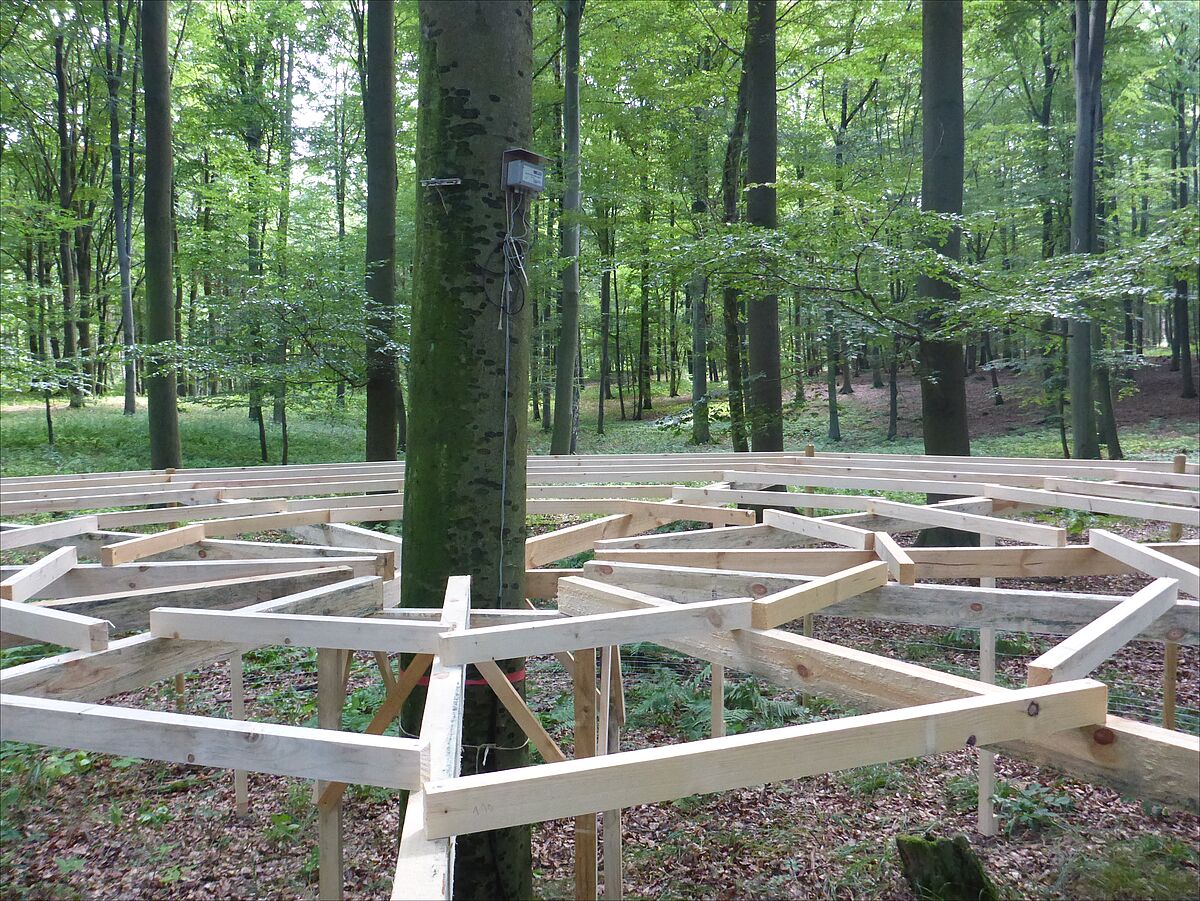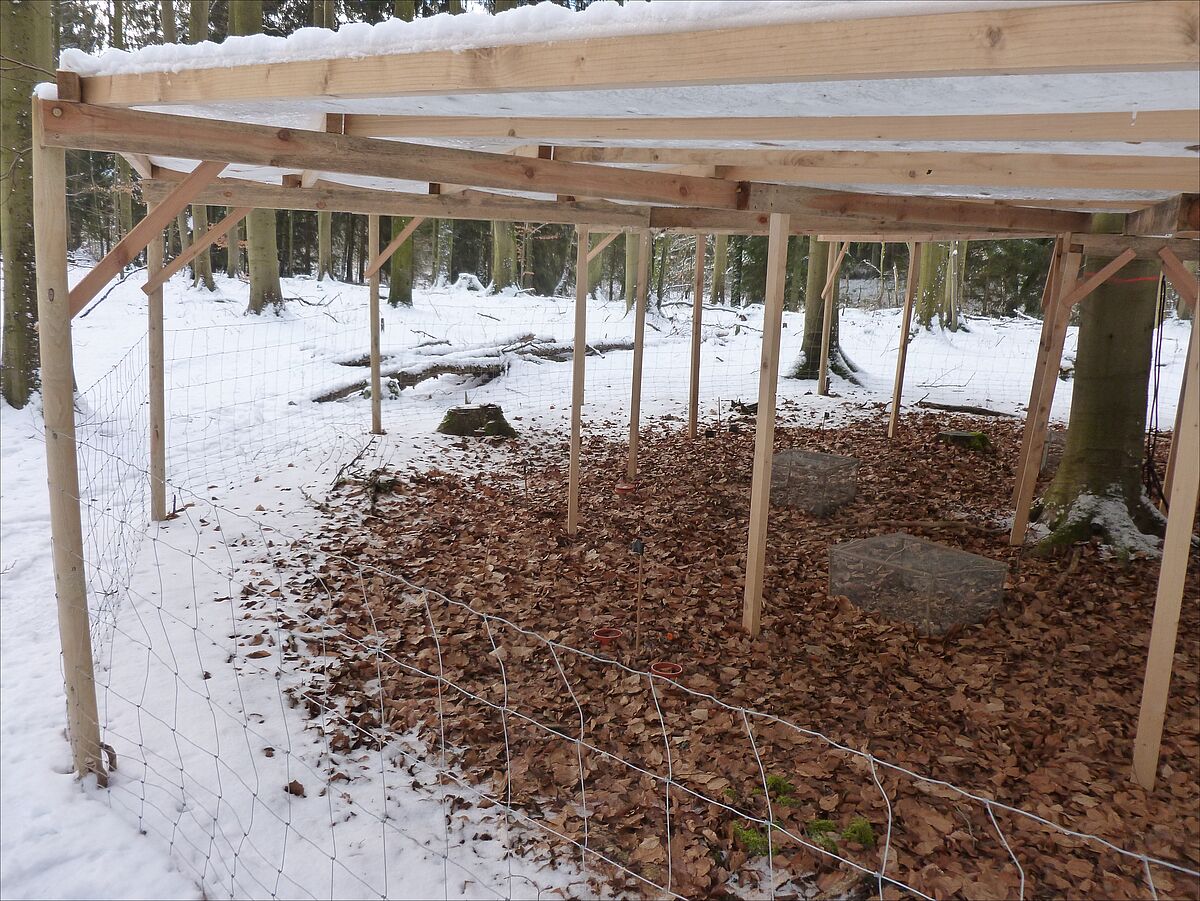Snow in temperate forests
The ecological and biogeochemical importance of snow cover for temperate forest ecosystems



Contact: Robert Weigel, Jürgen Kreyling
Effects of global warming will be most pronounced in winter. A reduction in snow cover due to warmer atmospheric temperature, however, could counteract an increase of soil temperature. Additionally, frost frequency might increase. In general, winter conditions are crucial for ecology and biogeochemical cycles in temperate forest ecosystems. Thus, experiments focussing on the effects of altered snow cover will improve research in climate change. These climate manipulation experiments should be close to reality to deliver general understanding of ecosystem processes.
We conduct a snow manipulation experiment at 9 forest sites of European beech subsequent to a dendroecological classification of tree growth and climate-growth relationships at each site (Figure 1). To deliver realistic conditions and the possibility to generalize, the experiment is conducted on mature beech trees. In total, 33 representative trees were selected from a set of 200 trees by means of dendroecology.
The experimental sites follow a gradient of decreasing winter temperature (ΔT=5 K) from Rostock (Germany) to Dansk (Poland). The snow manipulation consists of (i) reduction of snow cover by setting up snow shelters and (ii) increase of insulation by fleece covers. Thus, effects of altered snow cover can be studied without soil disturbance and alteration of water and nutrient cycles. In the winters 2016/17 and 2017/18, the experiment delivers insight into a variety of processes: tree growth (juvenile and mature trees), rejuvenation, turnover of ground cover vegetation, root dynamics, carbon decomposition, nitrate mineralization and leakage, and trace gas fluxes. Additionally, climate chamber experiments with 18 seed provenances of European beech deliver complementing insights on the potential of local climatic adaptation. Here, provenance specific effects of frost magnitude and frequency are analysed. These lab trials give further insights into whether phenotypic and genetic within-species diversity could mitigate consequences of climate change for European forestry.
Download project description (pdf)
